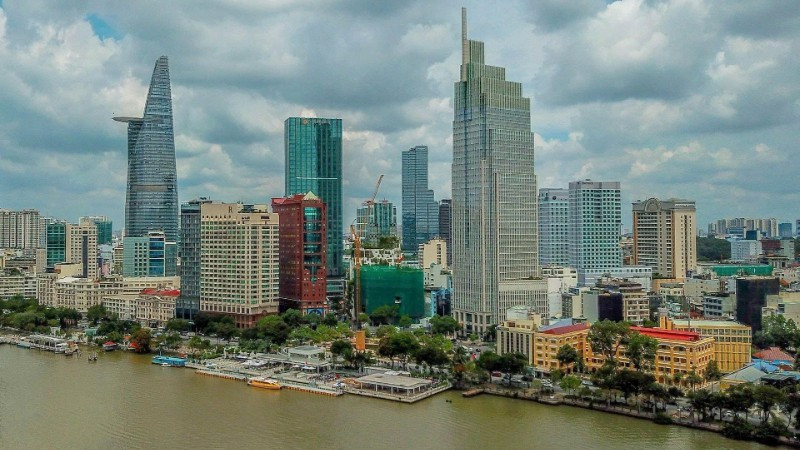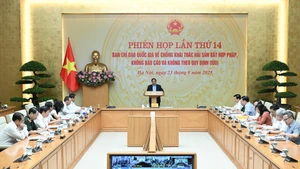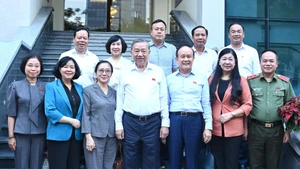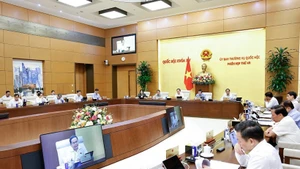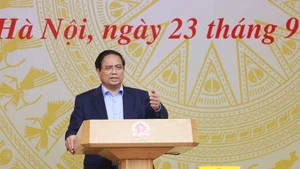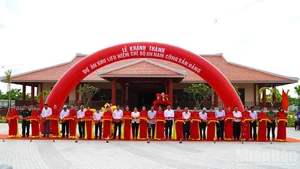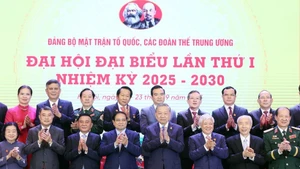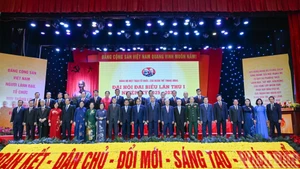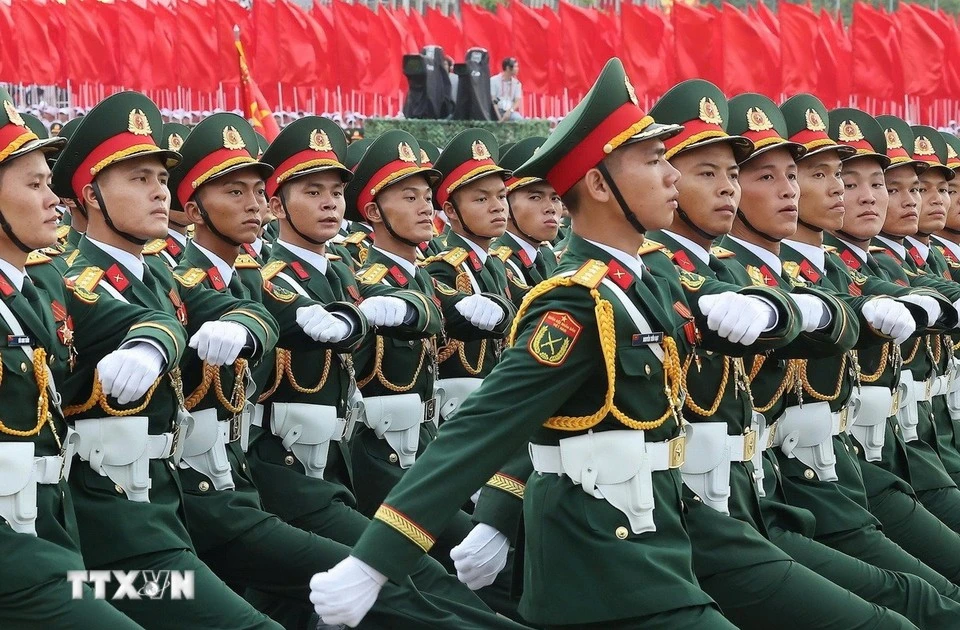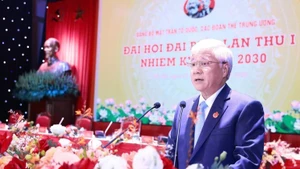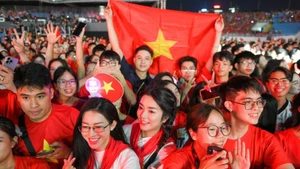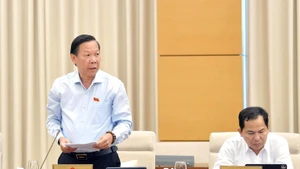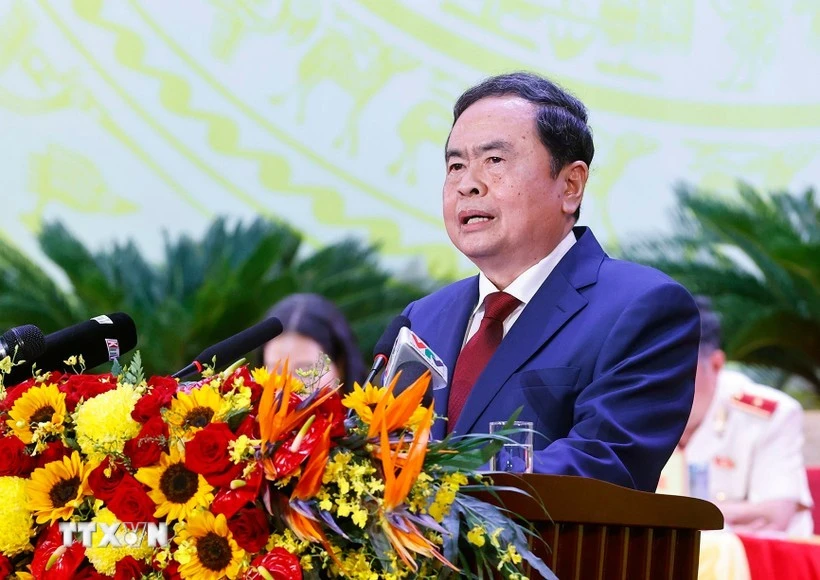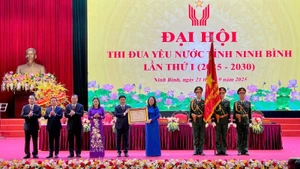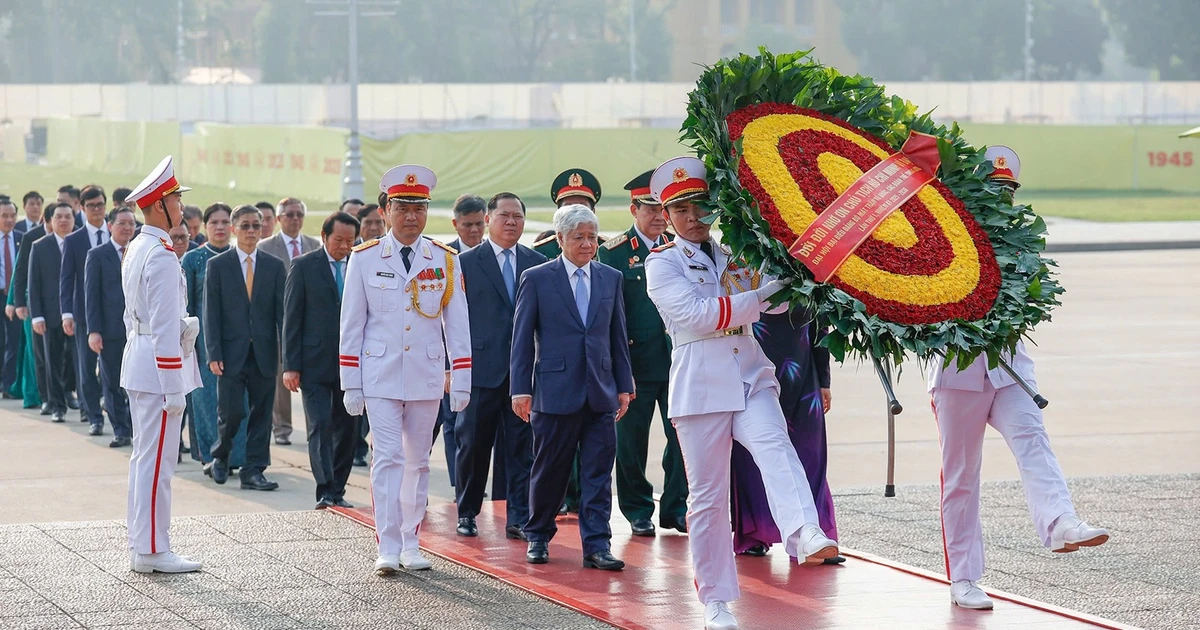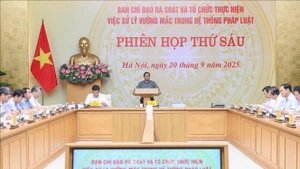Independence or Death!
After the success of the August Revolution in 1945, the people of Sai Gon in particular and of the Southern region in general had only 28 days (from August 24 to September 23) to savour the joy of national independence before they were forced to take up arms and embark on a harsh, yet heroic resistance war to defend peace and the independence of the Fatherland.
The French colonialists launched provocations on the night of September 22 and the early morning of September 23, 1945. They seized the key offices of the revolutionary government in Sai Gon, marking the beginning of their second war of aggression against our country.
An urgent conference was convened on Cay Mai Street, Cho Lon on the morning of September 23, 1945. This crucial meeting was attended by comrades Ung Van Khiem, Tran Van Giau, Nguyen Van Nguyen, Pham Ngoc Thach, Huynh Van Tieng, among others. Comrade Hoang Quoc Viet, representing the Standing Board of the Party Central Committee and the Viet Minh Headquarters, who had just arrived in Sai Gon, also took part. The conference analysed and assessed the situation, compared the strength between our side and the enemy, and decided to establish the Southern Resistance War Committee, with Comrade Tran Van Giau as Chairman.
The Southern Resistance War Committee subsequently directed the formation of the Sai Gon–Cho Lon Resistance War Committee, chaired by Comrade Nguyen Van Tu, and immediately sent an urgent telegram to the Party Central Committee and President Ho Chi Minh requesting instructions.
Comrade Tran Van Giau, Chairman of the Southern Resistance War Committee, on that very morning of September 23, 1945, issued a call: “Independence and freedom or death! Today, the Resistance War Committee calls upon all compatriots, young and old, men and women, to take up arms and rise up to drive out the invaders…”.
“Under the order of the Southern Resistance War Committee, the people of Sai Gon–Cho Lon–Gia Dinh immediately launched a general strike, suspended schools and markets, evacuated from the city, and cut off the enemy’s food supply routes.” Everything—from beds, wardrobes, tables, chairs, shop counters, ox carts, to rickshaws—was used by the people as barricades to obstruct the enemy’s advance.
“In the city, many union assault teams were organised with nearly 6,500 members, while self-defence forces held firmly to their combat positions. In the outskirts, the revolutionary armed forces tightened the encirclement. The soldiers and people of Sai Gon–Cho Lon–Gia Dinh, on September 23, 1945 itself, fought heroically, inflicting heavy losses on the French colonialists."
Since that historic autumn day, under the leadership and direction of President Ho Chi Minh, the Party Central Committee, the Southern Party Committee, later the Central Office for South Viet Nam, the National Front for the Liberation of South Viet Nam, and the Provisional Revolutionary Government of the Republic of South Viet Nam, the soldiers and people of the South endured 30 long years (1945–1975) of resilient and persistent struggle, achieving many glorious victories, the peak of which was the Great Spring Victory of 1975, which completely liberated the South and reunified the country.
Since that historic autumn day, under the leadership and direction of President Ho Chi Minh, the Party Central Committee, the Southern Party Committee, later the Central Office for South Viet Nam, the National Front for the Liberation of South Viet Nam, and the Provisional Revolutionary Government of the Republic of South Viet Nam, the soldiers and people of the South endured 30 long years (1945–1975) of resilient and persistent struggle, achieving many glorious victories, culminated in the Great Spring Victory of 1975, which completely liberated the South and reunified the country.
Continuing to uphold the spirit of the resistance war
Continuing the patriotic tradition and inheriting the lessons of history, the Party organisation, armed forces and people of Sai Gon–Cho Lon–Gia Dinh–Ho Chi Minh City carried forward the spirit of the resistance war in Southern Viet Nam, uniting with one heart, overcoming hardships, challenges, sacrifice, and loss, “together with the entire nation” to achieve new victories.
In the cause of protection, construction and development, the city achieved historic accomplishments, worthy of continuing the glorious revolutionary cause of previous generations. In the first 10 years after liberation, the city maintained revolutionary gains, stabilised politics, restored and developed the economy, and healed the wounds of war.
Particularly, over nearly 40 years of renovation, implementing the Party and State’s policies, under the leadership of the city’s Party organisation, with the efforts of the entire political system and the unity of all social strata, the city has attained important and comprehensive results in all fields: safeguarding political security and maintaining its role as the nation’s leading economic hub.
Ho Chi Minh City was newly formed through the merger of three localities: Ho Chi Minh City, Binh Duong Province and Ba Ria–Vung Tau Province, truly becoming a mega-urban centre of international stature on July 1, 2025.
The new city covers more than 6,700 square kilometres with a population of 14,002,598, serving as the core of the southern key economic region. This is not merely a geographical expansion but a synergy creating fresh momentum and new potential for higher-level, world-class development.
Chairman of the municipal People’s Committee Nguyen Van Duoc stated that the city aims to become a mega-city and an economic–industrial–logistics hub of Southeast Asia, with the vision of “one space–three regions–one special zone”.
Beyond being an economic centre, the city aspires to be a “livable” city, committing strong investment in healthcare, education, public health, and the physical and intellectual development of younger generations and workers.
The city aims to become a mega-city and an economic–industrial–logistics hub of Southeast Asia, with the vision of “one space–three regions–one special zone”. Beyond being an economic centre, the city aspires to be a “livable” city, committing strong investment in healthcare, education, public health, and the physical and intellectual development of younger generations and workers.
Chairman of the municipal People’s Committee Nguyen Van Duoc
According to Comrade Nguyen Van Duoc, to meet these ambitions, the city is focusing on implementing key projects such as: developing a world-class seaside tourism area (Ho Tram–Binh Chau–Long Hai–the former Vung Tau city); diversifying entertainment options; establishing a free trade zone linked with the Cai Mep–Can Gio trans-shipment port complex; developing the Can Gio eco-tourism–resort–urban area in connection with the Can Gio World Biosphere Reserve; building an international financial centre, and a multi-purpose hi-tech hub; expanding the core urban zone of Ho Chi Minh City; and forming the Binh Duong industrial–urban centre.
